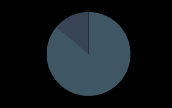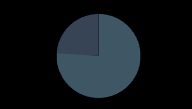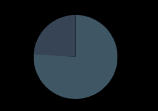Market Snapshot
In 2022, the demand for highly skilled cyber professionals persisted and remained elevated across various industries, in line with the trend observed in 2021. According to recent data, the demand for cybersecurity talent has experienced a significant rise of 60% over the past year, a trend that can be attributed to several factors, including the COVID-19 pandemic, the widespread adoption of remote work practices, and the integration of advanced technologies that have fundamentally altered the operational landscapes of many organisations. As the digital realm continues to evolve and expand, the associated risks and complexities of cyber threats have likewise grown in sophistication and scale.
Cybercrime Magazine projected that there would be 3.5 million job openings in the cybersecurity field by 2025, solidifying the need for firms to attract and retain top talent in this candidate-led market. According to the Bureau of Labour Statistics (BLS), jobs for information security analysts will grow by 33% from 2020 to 2030 and as a result, we have seen the average pay for Information and Cyber security professionals increase by 15% over the past 12 months.
As we look forward, the future trajectory of hiring practices within the cybersecurity industry is uncertain, given the volatile and ever-changing landscape. Despite the persistent shortage of skilled professionals, various socio-economic factors, such as the conflict in Europe, the economic downturn in the UK, and increasing global economic instability, will inevitably impact the recruitment strategies and approaches of organizations in 2023.
Cyber Security Salaries - 2023
Leadership
Hiring Demand | Gender Diversity | Median Tenure |
 |  |  |
The demand for Cyber Security Leadership talent is considered very high according to LinkedIn's latest data. | Leadership within Cyber Security presents a large gender gap: only 14% of this type of talent is female. | The median tenure for cyber security leadership candidates currently sits at 2.6 years, well above the industry average. |
LEADERSHIP | |
Chief Information Security Officer | £165K+ |
Head of IT Risk | £125 - £160K |
Head of GRC | £110 - £160K |
Head of Information Security | £120 - £165K |
Head of Security Architecture | £130 - £200K |
Head of Security Operations | £100 - £150K |
Head of Incident Response | £90 - £140K |
Governance, Risk & Compliance
Hiring Demand | Gender Diversity | Median Tenure |
 |  |  |
The demand for Cyber Security GRC talent is considered very high according to LinkedIn's latest data. | GRC functions within Cyber Security present a large gender gap: only 24% of candidates in the space are women. | The median tenure for Cyber Security GRC candidates currently sits at 2.3 years, which is above the industry average. |
GOVERNANCE, RISK AND COMPLIANCE | |
Business Information Security Officer | £95 - 130K |
Information Security Manager | £85 - £110K |
Information Security Officer | £80 - £95K |
Security Awareness Manager | £70 - £95K |
IT Risk Manager | £90 - £120K |
Third Party Risk Lead | £80 - £110K |
Information Security Analyst | £50 - £65K |
Technical Security
Hiring Demand | Gender Diversity | Median Tenure |
 |  |  |
The demand for Cyber Security Technical Security talent is considered very high according to LinkedIn's latest data. | Technical security presents the largest gender gap within cyber security: only 9% of candidates in the space are women. | The median tenure for technical security candidates currently sits at 1.9 years, which is slightly above the industry average. |
TECHNICAL SECURITY | |
Application Security Architect | £95 - 140K |
Application Security Engineer | £90 - £120K |
DevSecOps Engineer | £100 - £140K |
Information Security Engineer | £70 - £120K |
Security Engineering Manager | £90 - £130K |
Security Administrator | £40 - £60K |
Cloud Security Architect | £95 - £130K |
Enterprise Security Architect | £90 - £155K |
Detection & Investigation
Hiring Demand | Gender Diversity | Median Tenure |
 |  |  |
The demand for Detection/Investigation talent is considered very high according to LinkedIn's latest data. | The gender gap within Detection/Investigation is also quite large, as only 24% of candidates are women. | The median tenure for technical security candidates currently sits at 1.3 years, which is slightly below the industry average. |
DETECTION & INVESTIGATION | |
Cyber Security Architect | £65 - 85K |
Digital Forensics | £50 - £75K |
Threat & Vulnerability Manager | £75 - £105K |
Security Operations Analyst | £55 - £85K |
SOC / Security Operations Manager | £90 - £110K |
Incident Response Analyst | £65 - £75K |
Pentetration Testing
Hiring Demand | Gender Diversity | Median Tenure |
 |  |  |
The demand for penetration testing talent is considered very high according to LinkedIn's latest data. | Penetration testing presents one of the largest gender gaps within cyber security, with only 10% of talent being women. | The median tenure for pentesting talent currently sits at 1.4 years, which is slightly below the industry average. |
PENETRATION TESTING | |
Application Penetration Tester | £60 - 110K |
Infrastructure Penetration Tester | £40 - £90K |
Check Team Member | £70 - £90K |
Check Team Leader | £90 - £150K |
For the PDF version of Rutherford's 2023 Cyber Security Salary Survey, click here.
Contact
Michael Aspinall is a cyber security headhunter at Rutherford, the executive specialists in compliance, legal, financial crime, risk and cyber security recruitment.
Contact our cyber security headhunters for a confidential conversation surrounding cyber risk recruitment or cyber security recruitment, send us an email at enquiries@rutherfordsearch.com or see our latest vacancies.
Email: mike@rutherfordsearch.com
|


.png)

.png)
.png)





